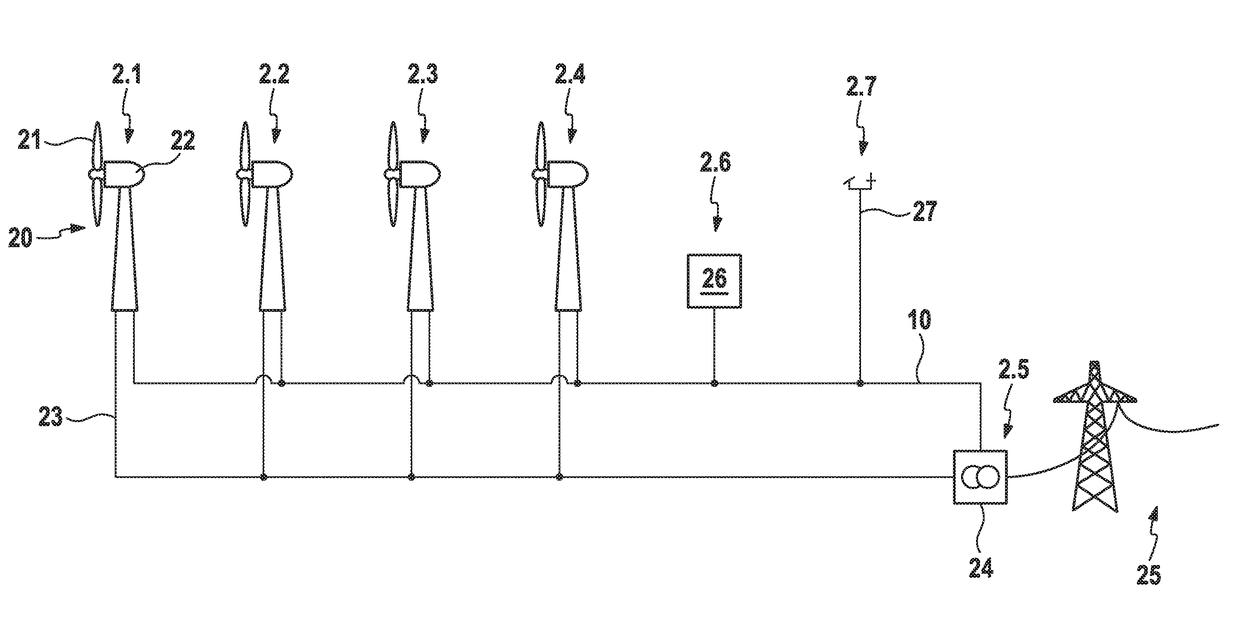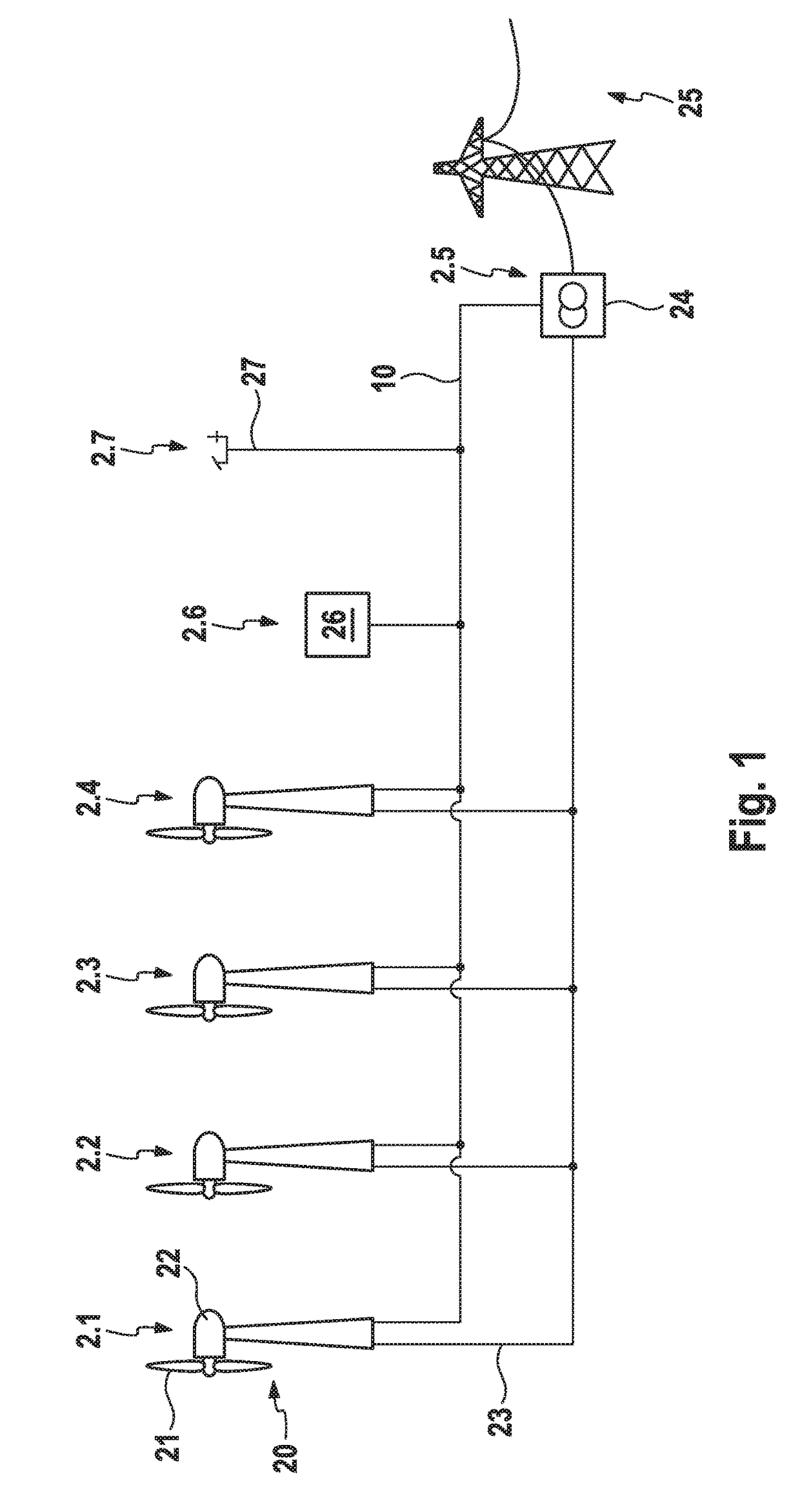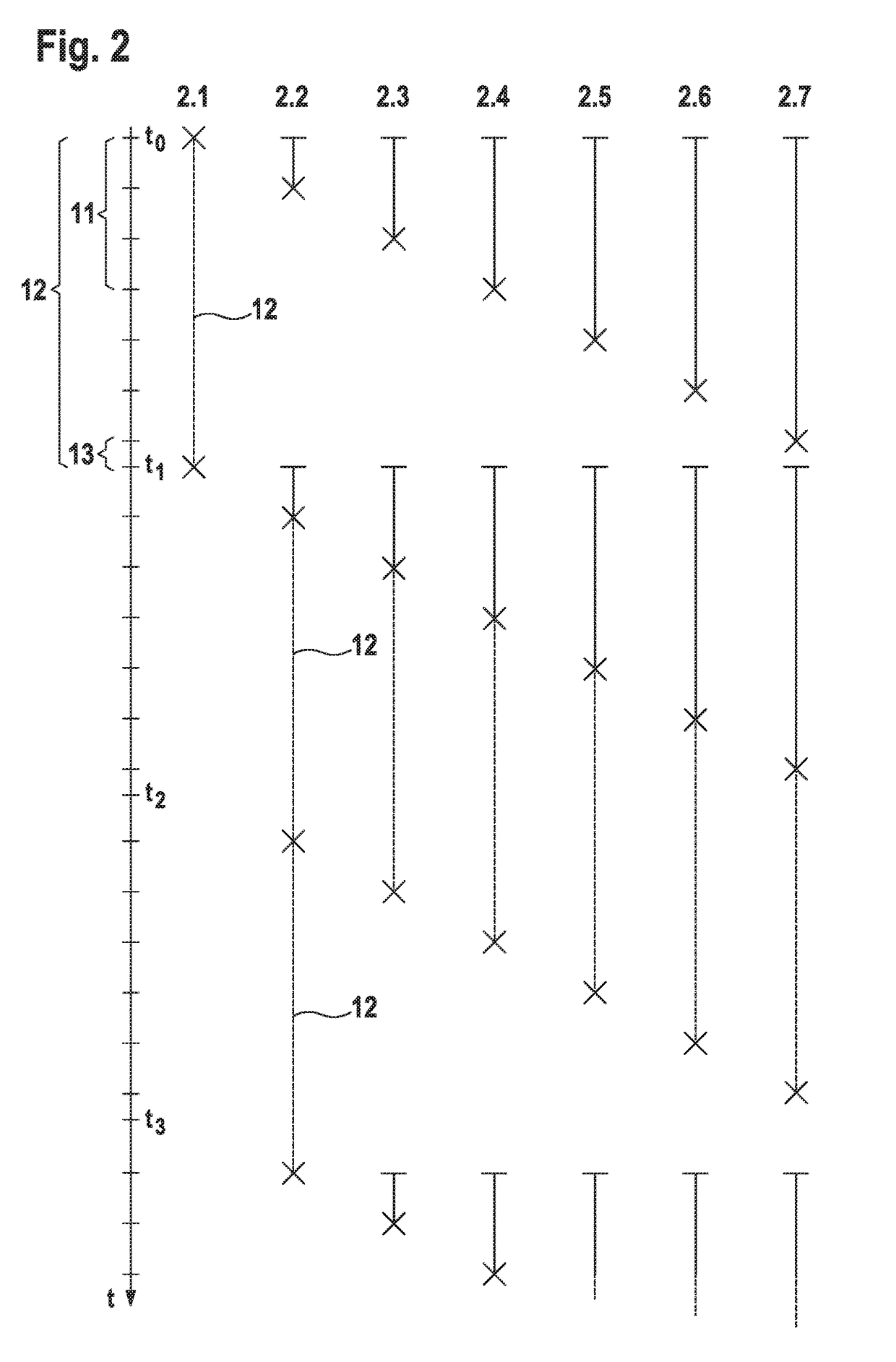Method and apparatus for communicating in wind farms
a communication method and technology for wind farms, applied in electrical devices, digital transmission, data switching networks, etc., can solve the problems of subscriber units needing separate synchronization units or needing to be provided
- Summary
- Abstract
- Description
- Claims
- Application Information
AI Technical Summary
Benefits of technology
Problems solved by technology
Method used
Image
Examples
Embodiment Construction
[0044]In all the exemplary embodiments, it is assumed for reasons of clarity that the order of the individual installations is formed from an installation number sorted in ascending order. The installation number is a sortable feature of every installation. The installation with the lowest installation number adopts the first position in the order, the installation with the next highest installation number adopts the second position, etc. Instead of the installation number, however, it is also possible to use any other arbitrary sortable feature. Equally, reverse sorting, i.e. sorting in descending order from the highest feature or the highest installation number, is also possible.
[0045]FIG. 1 shows a wind farm 1 having a multiplicity of installations 2. The installations 2 all have an installation number 1 to 7, which for reasons of clarity are shown as a suffix to the reference symbols.
[0046]The installations 2.1 to 2.4 are wind energy installations 20, in which a rotor having rot...
PUM
 Login to View More
Login to View More Abstract
Description
Claims
Application Information
 Login to View More
Login to View More - R&D
- Intellectual Property
- Life Sciences
- Materials
- Tech Scout
- Unparalleled Data Quality
- Higher Quality Content
- 60% Fewer Hallucinations
Browse by: Latest US Patents, China's latest patents, Technical Efficacy Thesaurus, Application Domain, Technology Topic, Popular Technical Reports.
© 2025 PatSnap. All rights reserved.Legal|Privacy policy|Modern Slavery Act Transparency Statement|Sitemap|About US| Contact US: help@patsnap.com



